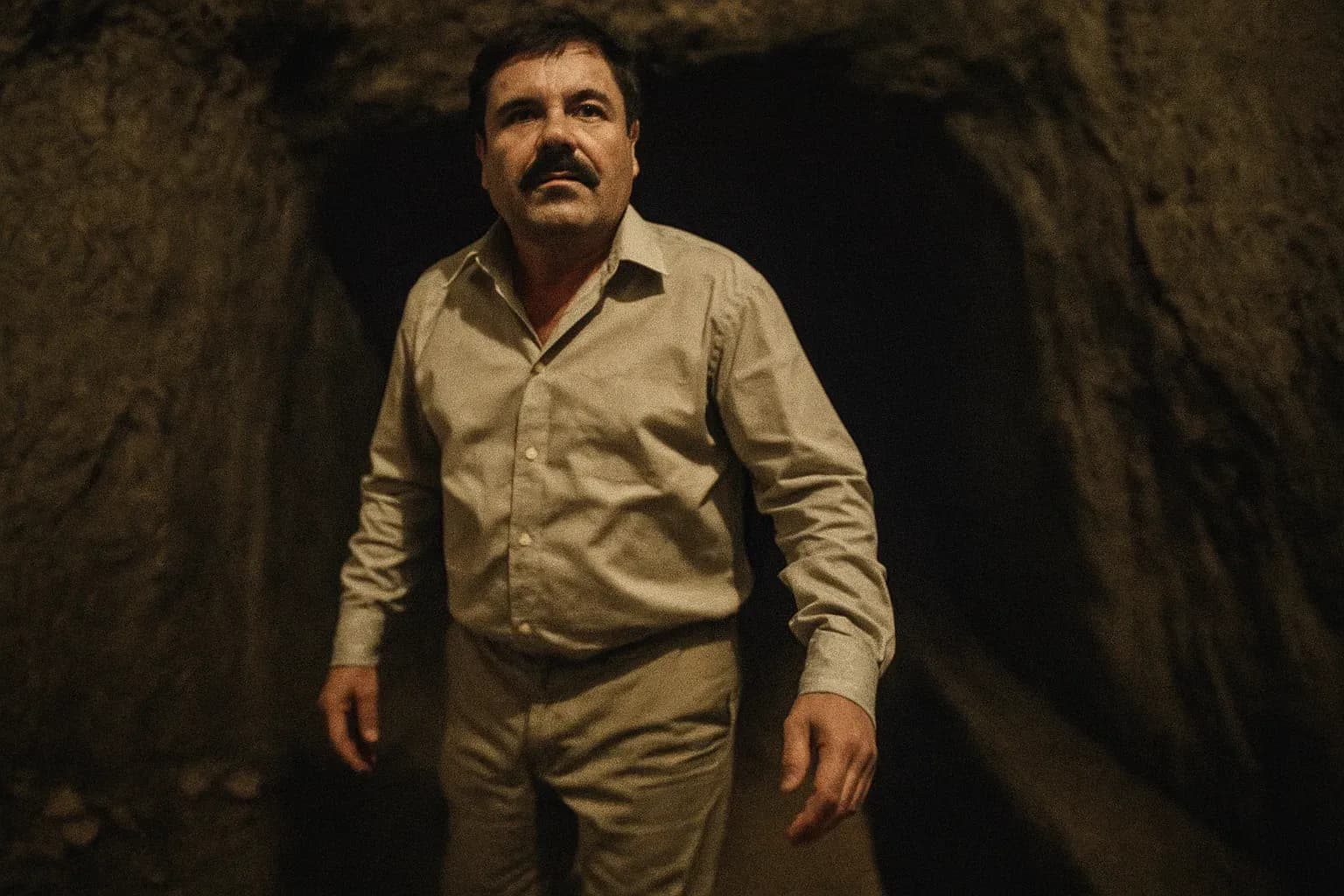El Chapo Guzmán: Sinaloa Cartel Leader and Mexico Escapes
Joaquín Archivaldo Guzmán Loera, known worldwide as 'El Chapo,' was [Internal Link Placeholder] most notorious [Internal Link Placeholder]. He built a fearsome reputation, not only through his vast drug empire but also via two spectacular [Internal Link Placeholder] from maximum-security prisons in 2001 and 2015. These daring feats exposed the deep-seated [Internal Link Placeholder] within the Mexican justice system and the immense power that [Internal Link Placeholder] could secure for the Sinaloa [Internal Link Placeholder], the infamous cartel he founded and led. His escapes resembled scenes from an action movie but were a terrifying reality in Mexico.
From Sinaloa Poverty to Leader of Global Drug Cartel
Raised in poverty in the state of Sinaloa, Guzmán became involved in drug trafficking at an early age. This led to his rapid rise and the founding of the powerful Sinaloa [Internal Link Placeholder]. In 1993, El Chapo was captured and sentenced to 20 years in prison. However, his time in Puente Grande prison quickly evolved into a continuation of his criminal reign, thanks to an extensive network of [Internal Link Placeholder] that afforded him both luxury and considerable freedom within its walls.
Puente Grande 2001: First Escape with Bribes and Cart
The first spectacular [Internal Link Placeholder] occurred on January 19, 2001. According to reports, a laundry worker opened Guzmán's cell, possibly with a copied key card. Joaquín Guzmán Loera then hid in a large laundry cart, which was wheeled unimpeded through several security checkpoints by guards influenced by bribes. Although [Internal Link Placeholder] captured the cart, those responsible looked the other way. A [Internal Link Placeholder] waited outside the prison, but El Chapo [Internal Link Placeholder] without a trace from it during a stop, cementing his mythical status. The subsequent investigation into this escape revealed 78 [Internal Link Placeholder], including the prison director, exposing the systemic [Internal Link Placeholder] where [Internal Link Placeholder] bought loyalty and impunity.
Back on Top: Hiding, Mazatlán Capture, New Escape Plans
For over a decade after his first [Internal Link Placeholder], El Chapo lived in hiding, mainly in the mountains of Sinaloa. From there, he continued to run his drug [Internal Link Placeholder], the Sinaloa Cartel, using complex networks of secret tunnels and air [Internal Link Placeholder]. While some in local communities viewed him as a kind of folk hero due to sporadic charitable projects, the reality was that his cartel's brutal war against rival groups led to tens of thousands of deaths, often caused by ruthless hitmen.
Altiplano 2015: Tunnel That Humiliated Government
The hunt for the [Internal Link Placeholder] [Internal Link Placeholder] culminated in February 2014. Mexican marines, in collaboration with US DEA agents, found and arrested Joaquín Guzmán Loera in an apartment in the coastal city of Mazatlán, Sinaloa. This time, El Chapo was incarcerated in the maximum-security Altiplano prison, which was equipped with extensive [Internal Link Placeholder]. Nevertheless, Guzmán apparently managed, through further [Internal Link Placeholder], to obtain communication devices and plan another incredible escape.
Manhunt After Escape: Sewer, Shoot-Out, Arrest in 2016
On July 11, 2015, Guzmán shocked the world by disappearing again. During a routine inspection, guards at Altiplano prison discovered a small hole under the shower in his cell. This hole led down to a 10-meter-deep shaft, which connected to an impressive 1.5-kilometer-long tunnel. This [Internal Link Placeholder] tunnel was an engineering masterpiece, complete with electric lighting, ventilation, and even rails for a modified motorcycle, presumably used to [Internal Link Placeholder] excavated soil and El Chapo himself. The tunnel's construction was carried out with extreme precision, based on GPS coordinates, and led to a building far from the prison grounds. It is estimated that the planning and excavation of this tunnel took at least 18 months and involved engineers with access to the prison's blueprints.
Extradition to USA: Trial, Life Sentence, Legacy
This second [Internal Link Placeholder] was a huge political humiliation for the Mexican government and intensified suspicions of widespread [Internal Link Placeholder] reaching the highest levels. After six months of intense searching, which included another dramatic escape through a sewer during a raid, Joaquín 'El Chapo' Guzmán was finally captured on January 8, 2016, in the city of Los Mochis, Sinaloa. An informant led authorities to a house where he was hiding. After a fierce shootout with Mexican special forces, the [Internal Link Placeholder] escaped again via a network of tunnels but was apprehended shortly thereafter on a highway as he attempted to steal a [Internal Link Placeholder].
Sources:
Fascinated by El Chapo's incredible story? Follow KrimiNyt for more in-depth cases on drug cartels, corruption, and spectacular escapes.
Susanne Sperling
Admin
